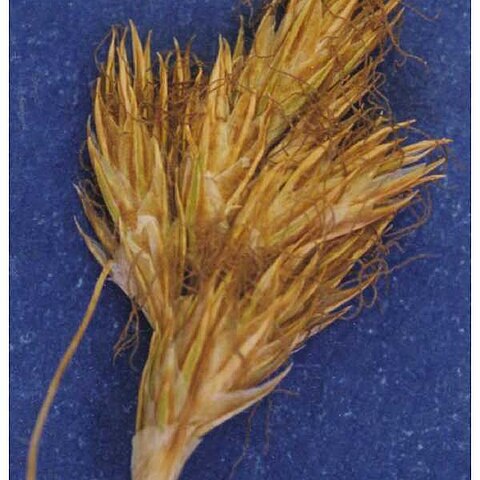Stems 1–3(–4) dm, smooth, scattered on long, slender, sympodial rhizomes; lvs basally disposed, 1–2.5 mm wide, flat or involute; dioecious; spikes sessile, inconspicuously bracteate, ovoid-fusiform, 1–1.5 cm, closely aggregated into a rhomboidal or ovoid to subcylindric head 1.5–4.5 cm; perigynia mostly ± hidden by the scales, rather narrowly elliptic to elliptic-obovate, planoconvex, becoming sharp-edged and serrulate distally, obscurely multistriate and with evident marginal nerves, 3.5–4.5 mm, including the prominent, 1–1.5 mm beak; achene lenticular; 2n=60. Dry soil; Man., Io., and Nebr. to B.C., Calif., and N.M.; intr. along railways in Mo.

